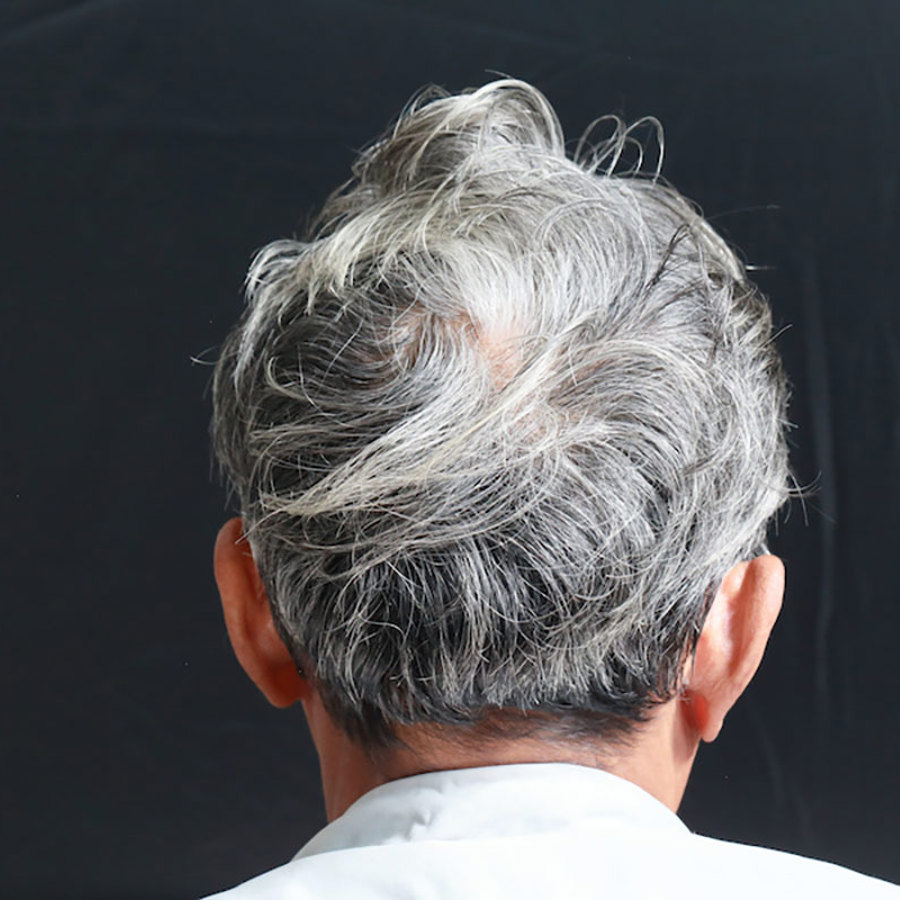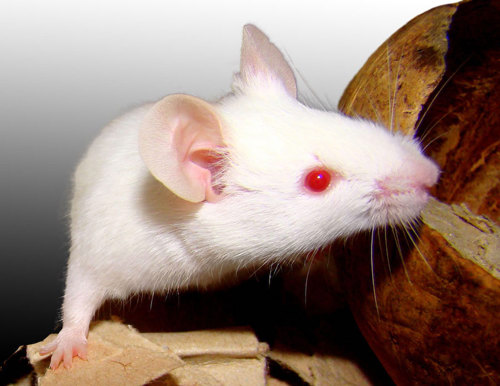
Is it possible to reverse greying hair with genetic engineering?
September 9, 2004

- Related Topics:
- Aging,
- Hair color,
- Futuristic science,
- Gene therapy,
- Biotechnology
A curious adult from Texas asks:
“Are there any genetic engineering studies being done to stimulate hair coloring in adults who are grey?”
There are some studies that have been done in animals, but for the foreseeable future, humans will have to keep using dyes for their gray hair. The risks of using any sort of engineering on humans right now is so high that any tinkering with our genes is only used in life and death cases.
Option 1: Fix the “broken” gene
I have seen two mouse studies. The first study was done on albino mice.1 Hair, skin, and eye color are dependent on a natural pigment called melanin. Albino mice fail to make melanin which is why they are white with red eyes.
Scientists used a technique called chimeric RNA/DNA oligonucleotide gene repair (now that's a mouthful!) to fix a broken pigment gene in an albino mouse.2 There are many genes involved in making melanin and so there are lots of ways to become an albino. To “cure” this albino mouse, the scientists needed to know which specific gene was broken and why.
The treated mouse sprouted black hairs in the area where the gene was fixed. Unfortunately, the “fix” only lasted 1-3 months before turning gray again. With what we know right now, could we do the same sort of experiment in people? No.
Human genetics is more challenging
Unlike albinism in mice, almost nothing is known about the genes involved in graying hair. The technique used to fix the albino mouse actually corrects small mistakes in the mouse's DNA. To use this technique for people with graying hair, there would need to be a single, small DNA sequence that causes graying.
How would scientists go about finding the genes and sequences involved in graying hair? One way would be by comparing the DNA of people who gray early and people who gray late or not at all. Some of the differences between the two sets of people are probably the culprit in gray hair. If there is a single small difference, then it might be eventually possible to fix it in prematurely graying people as was done for the albino mouse.

Needless to say, given that two people have on average 3 million differences in their DNA, this would not be a trivial undertaking. Another solution would be to take the approach used in the second mouse study.
Option 2: Add color back in
In the second study, scientists used gene therapy to introduce a gene that gave mice glowing green hair.3 They took hair follicles from dead mice, infected them with a virus that had the gene for green glowing hair, and then grafted or “stuck” them onto a live mouse. The new hair now glowed green under blue light.
If scientists used a hair pigment gene instead of the one for the glowing green protein, then they might be able to color someone’s gray hair. This type of gene therapy would give you colored hair but probably not your original hair color. This is because it is really hard to get a gene to make just the right amount of its product.
In other words, you’d get some pigment in your hair but the amount would vary, probably from hair to hair. My guess is the eventual color of your hair would be a bit of a crapshoot.
Gene therapy for diseases
The little bit of genetic engineering being done on people these days is almost exclusively like that seen in the second study – a “good” gene is added back to a cell to cure some disease. This has been the approach in scientists’ continuing efforts to cure diseases such as SCID with gene therapy.
In Severe Combined ImmunoDeficiency (SCID), a single gene doesn't work properly. This one broken gene causes the immune system to essentially stop working – a simple cold could kill you! For the last 15-20 years, scientists have tried to cure the disease with gene therapy with only limited success. And this should be a really simple case in which to use gene therapy (which is why it was picked).

Gray hair is probably more complex than SCID, which will make it even more difficult to “treat” with gene therapy. In other words, given how hard gene therapy is and how little we know about graying hair, we're all going to have to wash that gray out of our hair for a long time to come

Author: Dr. Barry Starr
Barry served as The Tech Geneticist from 2002-2018. He founded Ask-a-Geneticist, answered thousands of questions submitted by people from all around the world, and oversaw and edited all articles published during his tenure. AAG is part of the Stanford at The Tech program, which brings Stanford scientists to The Tech to answer questions for this site, as well as to run science activities with visitors at The Tech Interactive in downtown San Jose.
 Skip Navigation
Skip Navigation
